After a long cold winter many anglers are eager to get out fly fishing at the first sign of spring. Unless you are lucky enough to live where you can fly fish year round, or have the means to travel somewhere warm during the winter, you are probably in this group, which includes me. Unfortunately less than ideal conditions and large numbers of anglers many times doesn’t make for a very pleasant experience. Many of us when asked how fishing was will simply shrug our shoulders and say, "it was just nice to get out". Very early you will be facing very low and clear water conditions but, for the weeks leading up to, and after run-off, high, murky and cold water is what awaits you. While early season fly fishing will always be challenging there are a few things you can do to make you early season trips more enjoyable and hopefully successful.
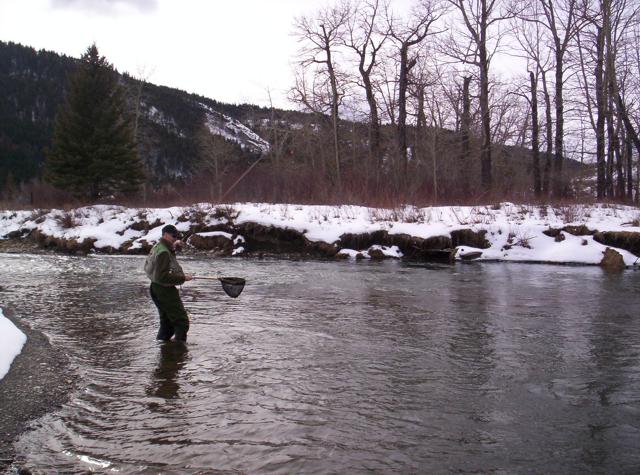
Early season fishing is a challenge but can be rewarding. >
Water conditions are one the biggest challenges you are going to face. Early season trout streams are usually running high, dirty and cold. Going further upstream sometimes the way to avoid or at least lesson the effect of run off. Most streams usually have feeder streams that enter into them, every time you get above where one of these enters you will usually find the water a little clearer. The time of day you want to fish at is also a factor in the spring, later on in the year the cooler morning and evenings are best but in the spring you will want to fish during the mid day hours, when it is warmest. Another strategy is to fish tail waters below damns, where the flows, clarity and water temperature are mitigated by the damn, these often provide year round fishing opportunities and are always a good bet in the spring. Another option, if you are lucky enough to live near one, are spring creeks. As the name implies these creeks originate from underground and are usually clear, or clearer than freestone streams, and have consistent water temperatures year round. If you don't have a spring creek or tail water near you hopefully these tips will help you catch a few trout.
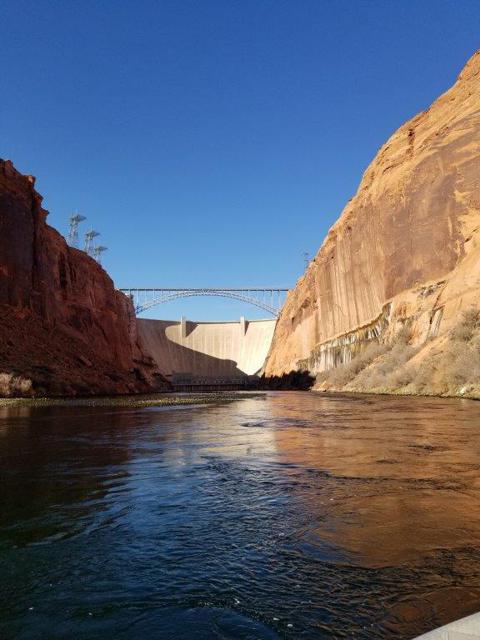
Tailwaters below damns can be your best choice if available to you.>
Nymphs In fly fishing nymphing is always a productive way to catch fish, and early in the year it is probably going to be your best bet. How fish feed at this time depends a lot on water temperature. While most trout will start to get active at 6^ C, optimum feeding temps are more like 10^ C, so in early season you’re going to be fishing for sluggish fish. While fish still need to eat at this time of the year the colder water temperature means they will eat less. Putting a nymph right on their nose is sometimes the only way to go. Make sure you are using enough weight and getting a drag free float so that your nymph gets down to the fishes level and they don’t have to move too far for it. I like to use a Stonefly nymph at this time of year. These bugs live as under water nymphs up to 4 years, and once mature get very active in the spring as they prepare to crawl to shore and hatch into winged adults.
They are a large insect making them easy for trout to spot even under dirty water conditions. They are a good sized meal for the trout and when they start to get active many of them will get washed away, as they don’t swim, drifting helplessly downstream. They are always a good searching pattern but are especially effective in the spring. It’s important to get a good drag free drift with these imitations so cast upstream, let the nymph dead drift back towards you. Use strike indicators in combination with split shot to get the fly or flies down to the fish. Remember to keep up with the slack in your line when nymphing this way or else you’ll never be able to set the hook.
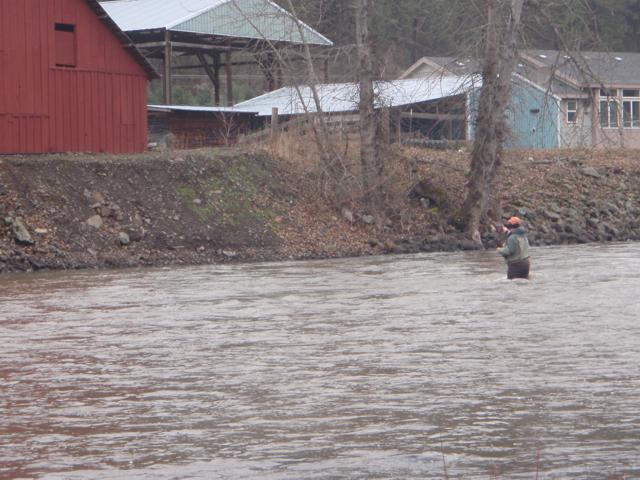
Nymphing is often the most productive method in the spring. >
Streamers While early season streamer fishing can be challenging due to water conditions, it is also a good bet for larger fish. Getting the fly down to the level the trout are at, usually near the bottom, can be difficult. Look for soft edges and slow pools where the fly will have time to get down to the fishes level. Fish need shelter from the strong currents at time of the year and will not chase your imitation very far so your presentation must be accurate. Softer water with some depth to it is ideal at this time of the year.
Below riffles is a favourite spot of mine to fish streamers, lots of oxygen, break from the current and food being dumped produces ideal conditions. Try different retrieves and lengths of strips, I find usually under these conditions that 4"-6" slow strips with a pause in between works well. Strikes will not be as aggressive at this time of the year so stay in contact with your fly. Start right below the riffle and slowly fish your way down stream fishing the areas where you can get a good presentation. You will probably find the fish are a little downstream of where they are in summer but is best to cover the whole area.
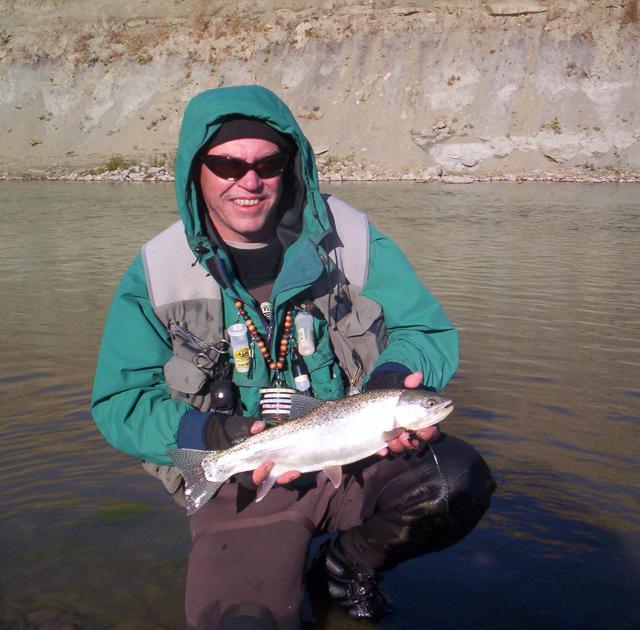
Streamer fishing can be rewarding. >
Dry Flies Whatever you do at this time of the year do not write off dry fly fishing. Trout are hungry and if the conditions are right success can be had fishing dries. While most people associate early season dry fly fishing with midges, these small insects hatch out profusely through the winter and into the spring, but are extremely it is usually very hard to be successful with any consistency with them. It’s rare to see trout rising with any regularity to these bugs even though at times they blanket the water. If you do find a fish or two rising with some consistency in generally the same area, try using a cheater pattern, a Griffith Gnat in a size #16 or even a #14 will hopefully look like a cluster of midges to the fish.
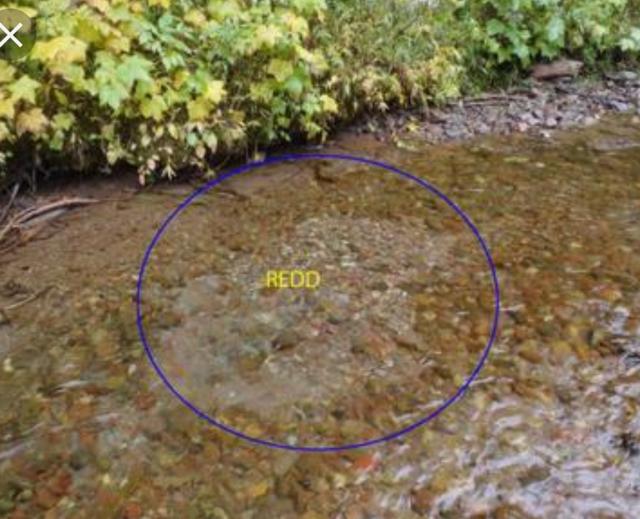
Learn what a Redd looks like and avoid wading in and around them.>
Another tactic is to try something altogether different like an ant or beetle pattern. These terrestrial insects are around all year and become active in the spring, some of them will always end up in the water somehow. Once in the water they are trapped and many are destined to become lunch for a hungry trout. You can always fish a double dry rig using both the Gnat and the terrestrial a couple of feet apart. Blue Winged Olives are the first mayfly to hatch in many parts of the west so I’m always prepared with some olive coloured patterns, such as a parachute Adams.
Remember that at this time of year Rainbows will be getting ready to spawn or will be spawning so be careful not to walk on any Redds. If you don't know what a Redd looks like, learn. If you come across fish that are on or around a Redd leave them alone to do their thing. Safety is important at all times of the year but is crucial in the spring, cold high water, rocks that roll under your feet, unstable banks and floating debris can cause serious problems. Never fish alone, carry a wading staff and use wading boots that have a good grip. Inflatable life jackets such as the Mustang MIT inflatables are not bulky at all and could save your life if you should happen to fall in. So if cabin fever has set in and you have a case of the "shack nasties" get out on the water and shake off the cobwebs, who knows you might even catch a fish or too, if not it's just good to get out.


